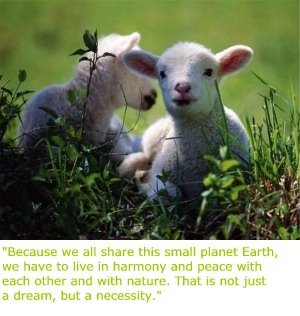
 The thrifty farm wife quickly discovered that this cotton bag was a great source of utilitarian fabric to be used for dish cloths, diapers, nightgowns and other household uses. Manufacturers decided to take advantage of this and started offering sacks in various prints and solid colors as a marketing ploy to create loyalty. It would take three identical sacks to make a dress, for example, and the farmer just might be induced to buy more that way.
The thrifty farm wife quickly discovered that this cotton bag was a great source of utilitarian fabric to be used for dish cloths, diapers, nightgowns and other household uses. Manufacturers decided to take advantage of this and started offering sacks in various prints and solid colors as a marketing ploy to create loyalty. It would take three identical sacks to make a dress, for example, and the farmer just might be induced to buy more that way.It was not hard for the farmer to purchase his goods in feedsacks. The flour industry consumed the largest share of the feedsack market with more than 42 percent. Sugar was next with 17 percent followed by feed, seeds, rice, and fertilizer. These feedsacks came in different sizes, and the quality of the cloth varied with the item it carried. Sugar sacks, for example, were much finer in weave. By 1914, sacks came in 10, 6, 4, 3, 2 and 1 pound sizes, although these sizes varied by manufacturer. President Roosevelt standardized sizes in 1937. A 50 pound feedsack measured 34 x 38 inches. A 100 pound sack measured 39 x 46.
Visit my ebay store I have these two feedsacks for sale:
http://cgi.ebay.com/ws/eBayISAPI.dll?ViewItem&rd=1&item=180279031248&ssPageName=STRK:MESE:IT
http://cgi.ebay.com/ws/eBayISAPI.dll?ViewItem&rd=1&item=180279031248&ssPageName=STRK:MESE:IT
These were used and still are used for pillowcases, quilts, sewing make-do's or just as they are, they are a wonderful part of our heritage.















No comments:
Post a Comment